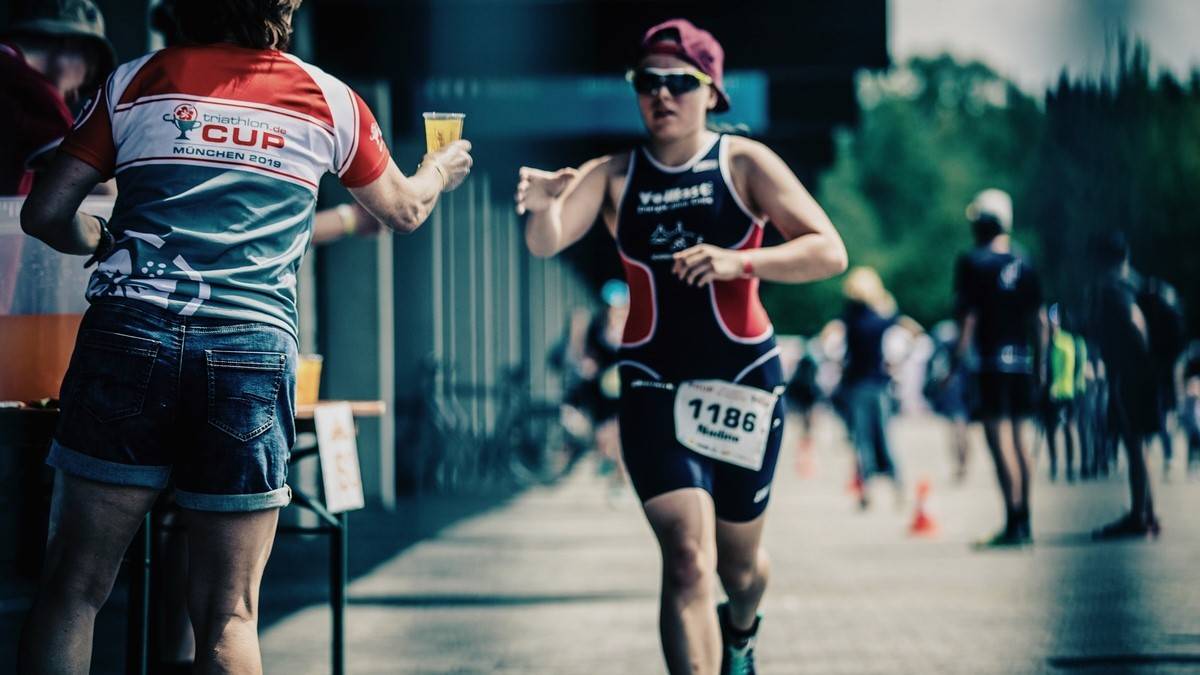Eine Beinlängendifferenz kann Ursache vieler (Überlastungs-) Beschwerden sein. Trotzdem dauert es meist recht lange, bis Schmerzen auf unterschiedlich lange Beine zurückgeführt werden. Gerade, weil Triathleten ihren Körper stark belasten und kleinste Fehlstellungen somit noch mehr Auswirkungen haben, sollte auch der gar nicht so seltenen Beinlängendifferenz Beachtung geschenkt werden.
Die meisten Unterschiede in der Länge der Beine sind marginal – sie fallen nicht auf und der Betreffende kann schmerzfrei damit leben. Je größer aber die Differenz und je umfangreicher das Training ist, desto eher resultieren Schmerzen aus den unterschiedlich langen Gliedmaßen. Beschwerden treten meist im Hüftgelenk, dem Knie oder im Rücken auf. Grund dafür ist, das durch die unterschiedlich langen Beine schiefe Becken. Das führt zur Überbeanspruchung der genannten Gelenke, einer Verschlechterung der allgemeinen Beweglichkeit, einer Verspannung der Muskulatur und es kann sogar zu einer sogenannten Skoliose kommen, einer Wirbelsäulenverkrümmung.
Triathleten häufig betroffen
Fleißige Triathleten sind besonders betroffen: Die unteren Extremitäten werden bei jedem Lauftraining stark belastet – wer eine Beinlängendifferenz hat, beschleunigt die oben genannten Beschwerdebilder mit dem Training. Auch auf dem Rad wirkt sich die Beinlängendifferenz aus: Da ein Bein „sich strecken“ muss, um genauso kräftig in die Pedale treten zu können, ist hier ebenfalls das Becken und damit auch der Oberkörper schief. Beim Schwimmen sollten zunächst keine Probleme aufkommen. Eine durch die Beinlängendifferenz verursachte Wirbelsäulenverkrümmung kann dann aber natürlich zu erheblichen Beschwerden führen.
Anatomische und funktionelle Beinlängendifferenz
Es gibt mittlerweile viele Verfahren, um eine Beinlängendifferenz auszugleichen. Allerdings sollte vorher bekannt sein, was der Grund für die Differenz ist. Es wird in der Medizin zwischen zwei Ursachengruppen für Beinlängenunterschiede unterschieden: der anatomischen und der funktionellen Beinlängendifferenz. Vereinfacht gesagt ist die anatomische Differenz ein „echter“ Unterschied der Beinlänge. Das eine Bein kann von Geburt an kürzer als das andere sein oder es wurde durch einen Knochenbruch oder eine Lähmungskrankheit im Wachstum unterbrochen. Hier ist es einfach, die Differenz durch eine Einlage, einen Spezialschuh oder dickere Pedalplatten auszugleichen.
Eine funktionelle Beinlängendifferenz ist ein durch eine andere Ursache resultierender „scheinbarer“ Unterschied der Beinlänge. Ist z.B. die Skoliose angeboren, hat das auch Einfluss auf das Becken und die Beine. Die Gelenke in Hüfte, Sprunggelenk oder Knie können auch Fehlstellungen aufweisen und ebenso kann eine verspannte, verkürzte oder zu schwache Muskulatur das Wachstum oder die Stellung der Beine beeinflussen. Dazu kommen diverse Krankheiten wie Osteoporose, die vor allem im Alter die Statik unsere Laufinstrumente beeinflusst.
Es stellt sich also die Frage: Was war zuerst da? Huhn oder Ei? Bei einer funktionellen Beinlängendifferenz muss zuerst die eigentliche Ursache in Angriff genommen werden, sonst kann auch die ausgeglichene Beinlängendifferenz kaum zur Linderung der Beschwerden führen.
Diagnose und Behandlung
Aus der kurzen Übersicht über Beschwerden und mögliche Ursachen lässt sich bereits herauslesen, dass schon ein kleines Problem große und viele Ursachen und Auswirkungen haben kann. Daher lohnt es sich für jeden Sportler, seinen Bewegungsapparat einmal durchchecken zu lassen – genauso, wie es empfohlen wird, einmal regelmäßig einen Herz- und Blutcheck zu machen.
Der frühzeitige Besuch eines Orthopäden und eines Physiotherapeuten (zwecks Muskelfunktions- und Beweglichkeitstest) kann womöglichen falschen Schlussfolgerungen zuvorkommen und Schmerzen gar nicht erst entstehen lassen.
Eine Beinlängendifferenz kann dann durch unterschiedliche Methoden ermittelt werden. Die Einfachste: Ein Orthopäde sieht je nach Größe der Differenz am Becken bereits mit dem bloßen Auge, ob es Unterschiede gibt. Außerdem werden bestimmte Beckenwaagen benutzt, die für Gewissheit sorgen sollen. Natürlich lässt sich so kaum herausfinden, ob es sich um eine funktionelle oder eine anatomische Beinlängendifferenz handelt. Daher bietet es sich auch an, bei Verdacht ein Röntgenbild zu machen bzw. Becken und Wirbelsäule so zu vermessen, dass ein 3D-Bild entsteht. Andere Tests beim Orthopäden können andere Ursachen für die Längendifferenz herausfinden.
Ausgleich
Wie lässt sich eine Beinlängendifferenz nun ausgleichen? Das Einfachste ist es natürlich, geringere Unterschiede (bis etwa 1,5cm) mit Einlagen auszugleichen. Radfahrer können Platten unter die Pedalen montieren. Von unterschiedlich langen Kurbeln wird abgeraten, sie beeinflussen den Tretrhythmus zu stark und können neue Probleme verursachen. Eine größere Differenz wird vom Orthopäden meist nach und nach ausgeglichen, um den Körper nicht zu sehr zu verwirren. Bei größeren Differenzen wird ein spezieller orthopädischer Schuhmacher konsultiert, der Spezialschuhe anfertigt.
Triathleten haben meist einen starken Körper, der Fehlstellungen und Schmerzen bis zu einem bestimmten Grad ausgleichen kann. Daher gehen Triathleten erst zum Orthopäden, wenn es schon zu vielen Ausgleichsmechanismen im Körper mit den entsprechenden Folgeproblemen gekommen ist. Dann dauert es auch länger, die Differenz zu erkennen und zu behandeln. Es lohnt sich also für Sportler, frühzeitig den Bewegungsapparat unter die Lupe nehmen zu lassen um etwaige Marathonarztbesuche und eine längere Trainingspause zu vermeiden.
Der neue Saucony Endorphin PRO 3 ist da
Warum die dritte Generation des Carbon-Racers jetzt noch schneller ist, als seine Vorgänger erfährst Du > hier




















